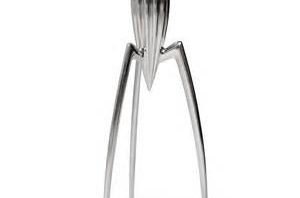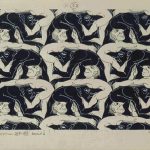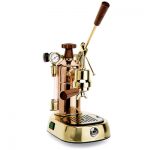[Part 3 of 12: 1) The science of the artificial 2) function, behaviour structure 3) form follows function, 4) no function in structure, 5) the medium is the message 6) types and schemas 7) aesthetics: attractive things work better 8) managing (great) expectations 9) colour 10) styles and standards 11) design solution spaces 12) conclusions]
My juicer is not meant to squeeze lemons; it is meant to start conversations – Philippe Starck
A theory, which has been heavily debated in modern architecture and industrial design, is that form follows function, a concept attributed to an 18th century monk Carlo Lodoli, whose theories on architecture have influenced many designers.
Form follows function states that the purer the functionality of an artefact, the more beautiful it is. Or simply put: less is more.
I have written before how my coffee machine, the La Pavoni Professional is a good example of this. There is no confusing clutter, you simply put the coffee in the grupa and then pull the handle down to push the water through.
Apparently Lodoli was inspired by nature, and the beauty that inspires purity of function: When you look at something, you can say straight away what it does. But, in nature things are not created with an intention. If anything, function follows form, and when we adapt this opposite approach, accidently or otherwise, we often use the word organic to describe how something has unfolded and works well without our interference.
When life gives you lemons
If we look at Phillips Starck’s lemon squeezer, it is absolutely fabulous, and I thoroughly enjoyed having it in my kitchen. However, when I used it I needed to put a big cup underneath it as the juice dribbled everywhere, and a tea strainer on top of the cup, to catch the pulp and the pips, otherwise I got all that too. Ultimately, I needed more than one tool to do the job – Starck’s squeezer, a tea strainer – and since neither tool the squeezer or the tea strainer was fit for purpose (it took ages to get the pulp back out of the tea strainer and off Starck’s squeezer), it was super irritating to squeeze lemons. Finally, I recycled Starck’s squeezer.
It is a wonderful looking artefact, even today when I look at the picture above, I am as thrilled by its form, as the very first day I had one in my kitchen – it is truly a thing of beauty – but then I remember again how I frustrated I felt by its limited functionality, and know for sure that the design principle form follows function is limited too.







10 comments